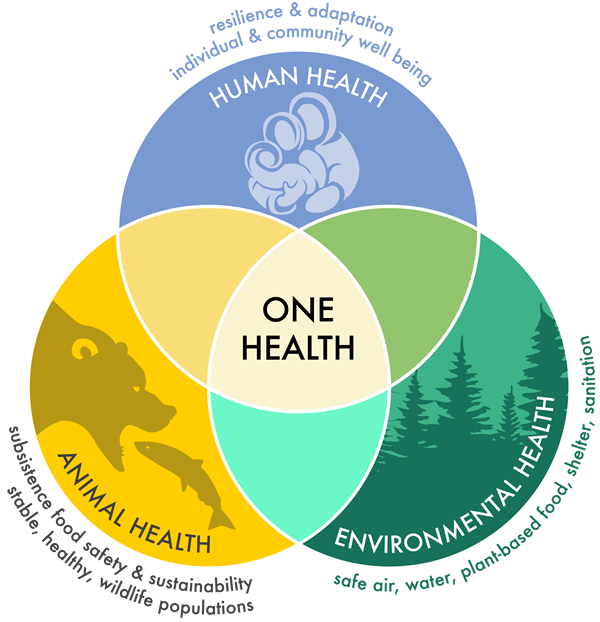
Copyright infringement not intended
Context: United States has announced a funding of USD 122 million to top three Indian medical research institutions to prevent avoidable epidemics, early detection of disease threats, and rapid and effective response.
More on the news:
- The total funding of USD 122,475,000 will, over a period of five years, be distributed to the three top Indian health research institutions -- Indian Council of Medical Research (ICMR), National Institute of Virology (NIV) and National Institute of Epidemiology (NIE).
- Announced by the Centres for Disease Control and Prevention (CDC), the fund will accelerate the progress towards an India which is safe and secure from infectious disease threats through ICMR institutions' focus on emerging and re-emerging pathogens.
- Prominent among these include detecting and controlling zoonotic disease outbreaks through a 'one health' approach; evaluating vaccine safety monitoring systems; capacitating the public health workforce in field epidemiology and outbreak response; and combating antimicrobial resistance, a media release said.
- CDC said ICMR is in a unique position to conduct this work, as it was originally established as an apex body for the formulation, coordination and promotion of biomedical research in India, and has taken up most of the laboratory-based surveillance of infectious diseases in recent years.
What is One Health Concept?
One Health is an approach that recognizes that the health of people is closely connected to the health of animals and our shared environment. This concept has become highly relevant as the world continues to grapple with the COVID-19 pandemic.
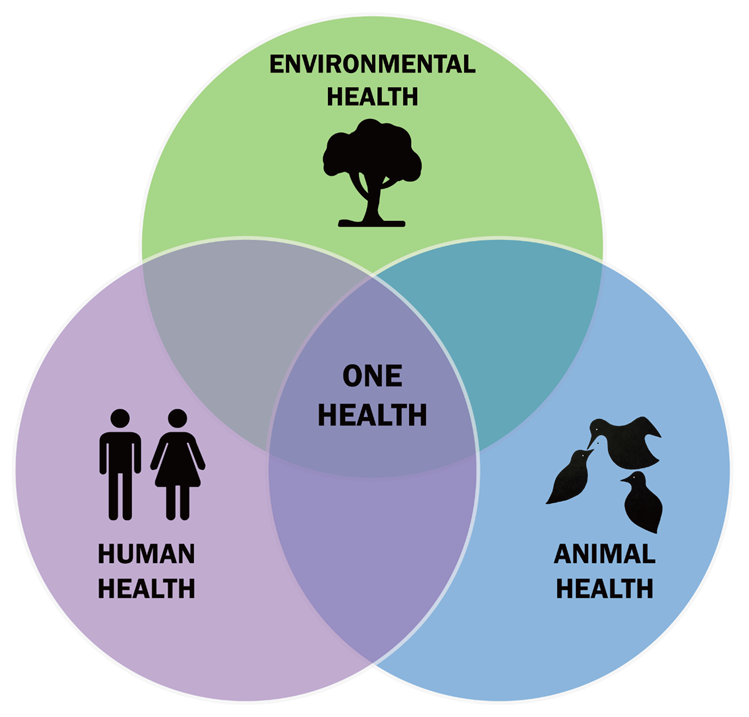
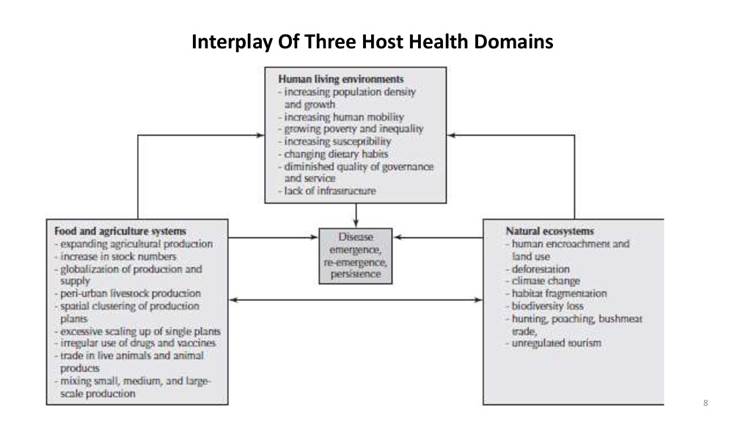
Copyright infringement not intended
Origin and evolution of the Concept
- Ancient Times: Greek physician Hippocrates (460 BCE –370 BCE) in his text "On Airs, Waters, and Places"promoted the concept that public health depended on a clean environment.
- Mid-1800s:Rudolf Virchow, a physician, recognized the link between animal and human medicine. He came up with the term zoonosis to describe a disease that can be passed from animals to humans. Further, he actively advocated for veterinary medical education.
- Neo Modern Times:The term ‘One Health’ was first used in 2003–2004. It was associated with the emergence of severe acute respiratory disease (SARS) in early 2003 and subsequently avian influenza H5N1.
Outcome - The Wildlife Conservation Society held a conference in New York called One World, One Health. Out of this meeting a series of strategic goals known as the ‘Manhattan Principles’ was derived.
- These principles highlight
- links between humans, animals, and the environment,
- how these links are integral to understanding disease dynamics,
- and the importance of interdisciplinary approaches to prevention, education, investment, and policy development.
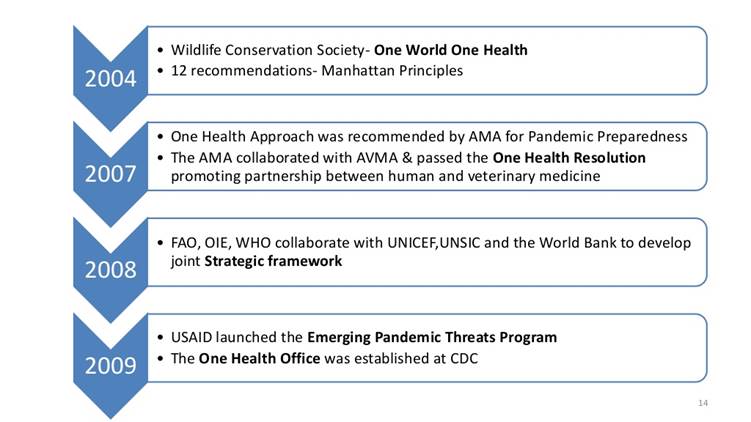
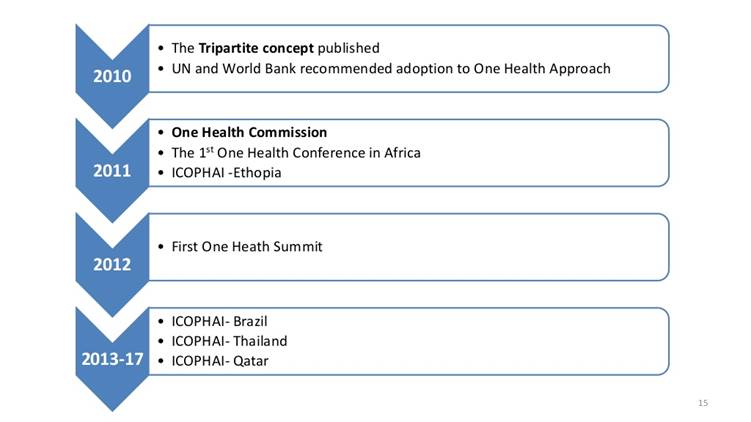
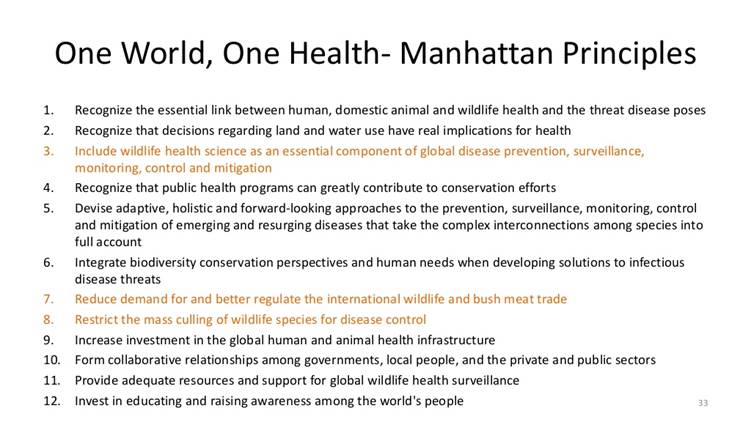
Copyright infringement not intended
The rationale behind the Concept
- Human populations are growing and expanding into new geographic areas. As a result, more people live in close contact with wild and domestic animals, both livestock and pets.
- Close contact with animals and their environments provide more opportunities for diseases to pass between animals and people.
- The earth has experienced changes in climate and land use, such as deforestation and intensive farming practices.
- Disruptions in environmental conditions and habitats can provide new opportunities for diseases to pass to animals.
- The movement of people, animals, and animal products has increased from international travel and trade.
- As a result, diseases spread quickly across borders and around the globe.
- As of now, worldwide, nearly 75 percentof all emerging human infectious diseases in the past three decadesoriginated in animals.
- More than two-thirds of emerging infectious diseases have their origins in animals. Examples of zoonotic diseases include COVID-19, Zika virus, Ebola virus, avian flu, SARS, MERS, West Nile virus, Lyme disease and yellow fever.
- Many common foodborne infections caused by Salmonella, E. coli, Campylobacter and other pathogensalso have their origins in animals and are a major cause of disease globally.
- Many of the drivers of these zoonotic disease outbreaks in humans and animals relate to environmental changes such as deforestation, agriculture intensification, biodiversity loss and climate-induced flooding and droughts.
- Thus, Global disease experts have recognized that a One Health approach is critical to addressing the growing threat from emerging zoonotic diseases.
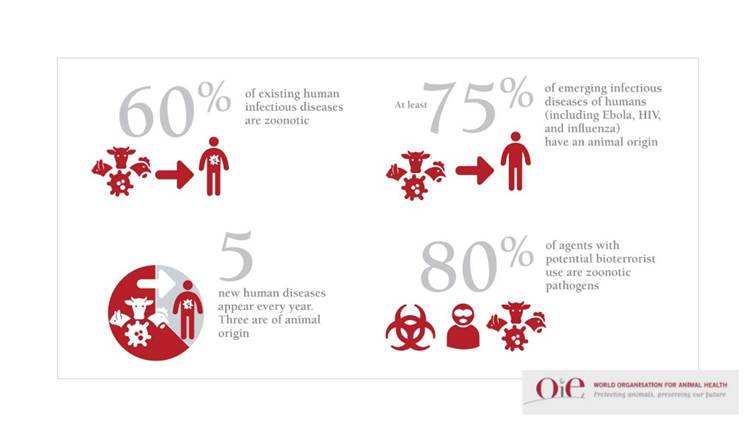
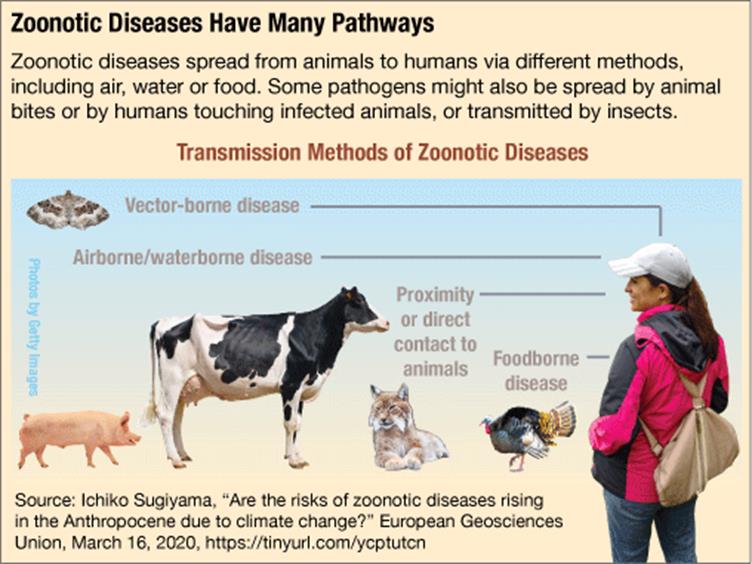
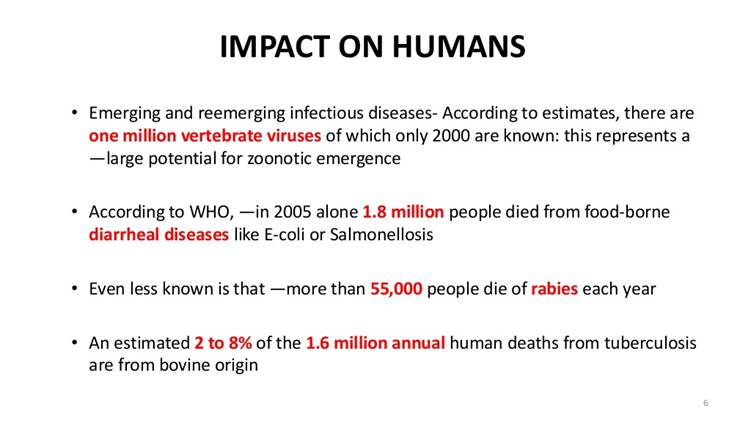
Copyright infringement not intended
The ongoing COVID-19 Pandemic is a testimony of the catastrophe and impact of zoonotic diseases on humans.
International Efforts
- The One Health Zoonotic Disease Prioritization process is led by the United States Centers for Disease Control and Prevention (CDC).
- It holds workshops internationally to prioritize which zoonotic diseases are of the most concern and helping countries develop action plans to address those diseases.
- One Health approach has long been advocated by the World Health Organisation (WHO), Food and Agriculture Organisation (FAO) and World Organisation of Animal Health (OIE).
- Additional organizations promoting international One Health efforts include:
- World Organization for Animal Health,
- The International Federation for Animal Health,
- Hubnet in Asia
- One Health Global Network etc
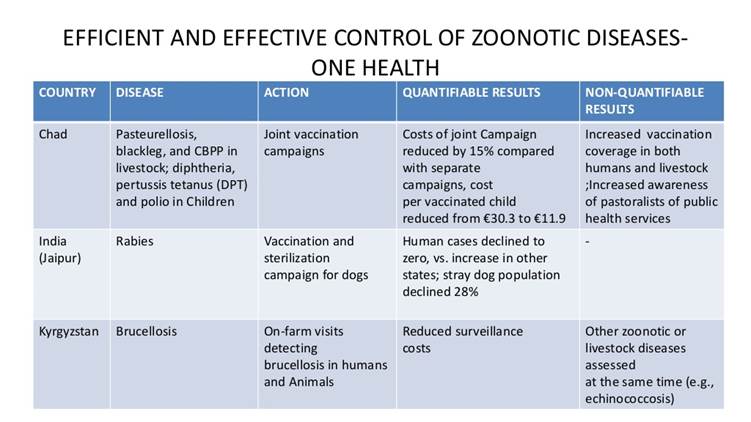
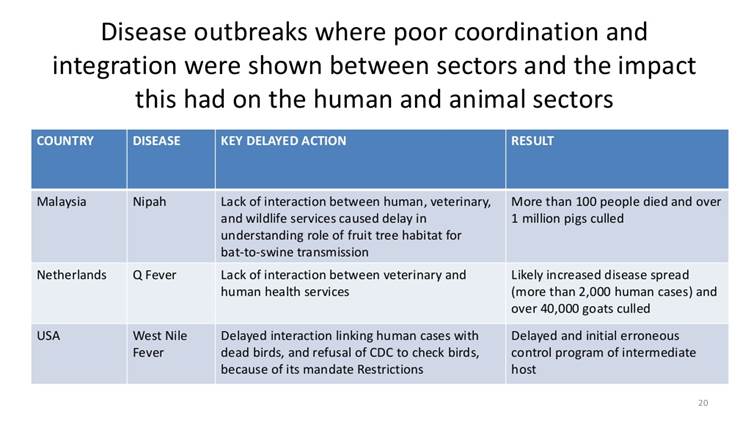
Copyright infringement not intended
India’s Efforts
- In 2019 India launched “One Health Initiative”together with support from the Bill and Melinda Gates Foundation, United States Defense Threat Reduction Agency’s Biological Threat Reduction Program and Penn State’s Applied Biological and Biosecurity Research Laboratory (ABRL).
- India’s One Health Initiative is an intersectoral approach to tackle the most urgent health threats in the region, with a focus on low and middle-income countries across south and southeast Asia and sub-Saharan Africa.
- Several Schemes have been launched by the Department of Animal Husbandry and Dairying (DAHD)to prevent animal diseases.
- Animal Health Diagnostic system such as Assistance to States for Control of Animal Diseases (ASCAD)are being upgraded.
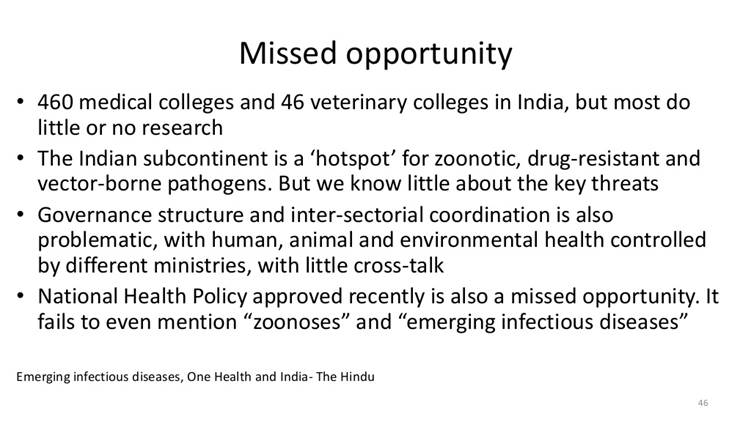
Copyright infringement not intended
Preventing the Next Pandemic: The Way Ahead
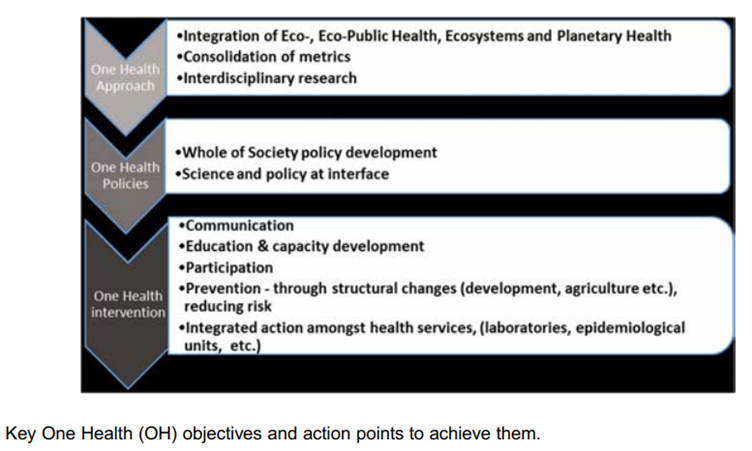
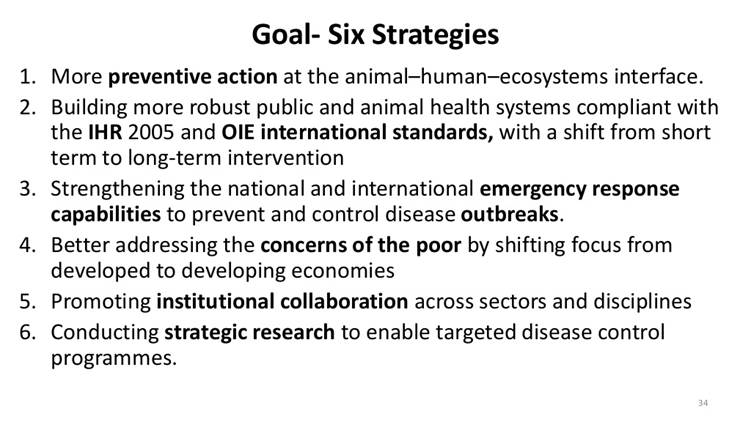
Copyright infringement not intended
- Coordinated surveillance system: The first step is to decide how the relevant stakeholders are to be linked and actions related to detection, analysis, response and communication for zoonotic disease are to be coordinated, considering:
- barriers to sharing data across sectors and what steps can be taken to overcome them;
- any point or step in the surveillance system where a multisectoral, One Health approach can be taken to jointly coordinate or conduct activities.
- Multisectoral, One Health Coordination Mechanism
- Interministerial Leadership and Coordination:supports coordination, collaboration, and communication among sectors at the leadership level, and advocates for a multisectoral, One Health approach to policymaking, strategic planning, and resource allocation.
- Technical coordinationsupports coordination of technical activities to ensure that a Multisectoral, One Health approach is taken and that there is alignment across existing governmental structures and across the technical activities addressing zoonotic diseases.
- Political Will (commitment to international standards and the Sustainable Development Goals);
- Sustainable Financing Plans;
- Communication (across sectors and disciplines at the international, regional, national and subnational levels).
- Prioritizing zoonotic diseasesand associated activities (e.g. aligning surveillance, developing a multisectoral preparedness plan)
- Developing a zoonotic disease framework - describes the roles and responsibilities of each relevant sector and how they communicate, collaborate, and coordinate activities
- Emergency response -strengthening of sector-specific public and animal health systems (e.g. surveillance, laboratories) is required for an effective emergency response;
- Focus on the planning process:Taking a multisectoral, One Health approach to the planning process will instill a culture of resiliency and preparedness in the different organizations;
- Mechanisms for prompt reportingto national and international authorities: Example SARS COV-2 from Wuhan this time.
- Risk Reduction Practices
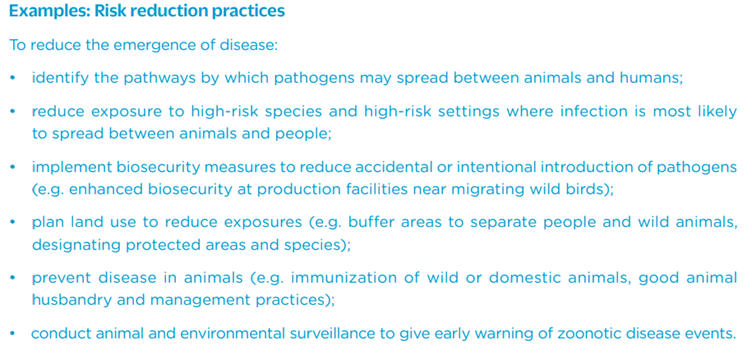
Copyright infringement not intended
- Mechanisms for mobilizing resources;
- Exchange and sharing of the current movements, which share common principles (EcoHealth, One Health, Ecosystems Health, Planetary Health, Conservation Medicine, Ecological Public Health) under one umbrella.
- Consolidate the position of a One Health approach outside of just the academic environment. Political support is vital for this.
- A common One Health curriculumcould be a goal across all key disciplines and be extended to continuing professional development and government training programmes.
- Foster transdisciplinary researchto level and degree of change in human (development) activities and behaviour, which will prevent or reduce risk.
- Continue to mitigate effects of emerging diseases through environmentally neutral approaches(surveillance, early warning, medical technologies and pharma).
- Participatory political approachto reach consensus on adoption of proposed One Health interventions
- Create communication and exchange platformsfor the One Health stakeholders at national, regional and international scale.
https://epaper.thehindu.com/Home/ShareArticle?OrgId=GAU9UB8KB.1&imageview=0
1.png)


















